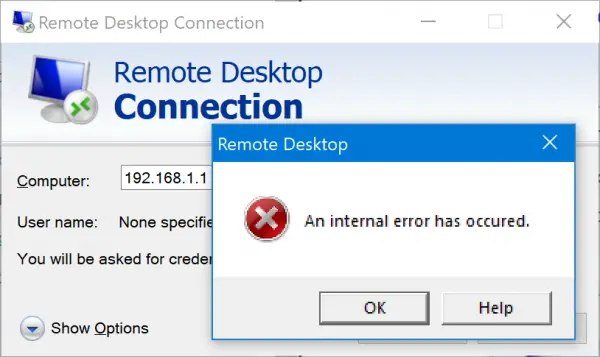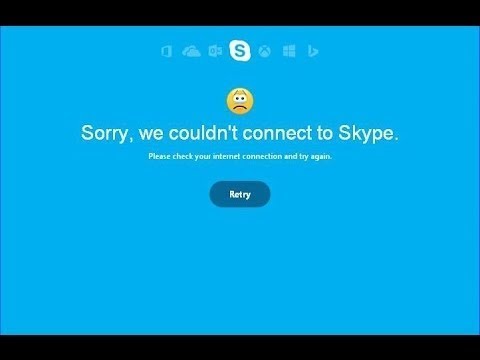

- #Skype for mac internal error install
- #Skype for mac internal error driver
- #Skype for mac internal error Patch
- #Skype for mac internal error windows 8.1
#Skype for mac internal error install
But I'm seeing reports that Windows Update is trying to install it again, even if it's listed in both Installed Updates and Update History. In theory, KB 3013769 shouldn't try to install itself if it was successfully installed in the past. Funnily enough, the step-by-step instructions don't mention re-installing Kaspersky. If you get a blue screen, the KB article - now up to version 6.0 - has a complex workaround that involves manually uninstalling Kaspersky Antivirus and applying the patch. The same problem was reported back in December with the original update. This blue screen shouldn't come as a surprise to Microsoft.
#Skype for mac internal error driver
K|1.sys is a Kaspersky Antivirus network driver trace file.
#Skype for mac internal error Patch
Many people using Kaspersky Antivirus report that installing the patch triggers a blue screen: SYSTEM_THREAD_EXCEPTION_NOT_HANDLED (kl1.sys).
#Skype for mac internal error windows 8.1
KB 3013769, the December 2014 update rollup for Windows 8.1 and Server 2012 R2, has been re-released as an optional update. It's still early in the game, but here are the problems I saw that cropped up overnight. There's also a Security Advisory about Public Key Cryptography User-to-User (PKU2U), called KB 3045755. Note that you must have Office 2013 SP1 before you can install any of these patches. Not to be outdone, the Office team released a bewildering array of updates for Office 2013, including 13 security patches, two bulletins, and 42 non-security patches. Net security bulletin alone gives rise to 10 different downloadable patches. Yesterday Microsoft released dozens of patches for Windows in 11 bulletins covering 26 individually identified CVEs (common vulnerabilities and exposures), including 10 in Internet Explorer, four re-released security changes, and nine changes to non-security patch installers. That's a problem for users, particularly because Microsoft's track record with patches is so bad - and this month is no exception. You can use the Lync Connectivity Analyzer to learn more about the service URL’s returned during Lync Discovery.Microsoft usually releases a list of non-security patches several days before the Black Tuesday rollout, but this month there was no information until several hours after the patches hit. is resolved to the external Autodiscover web service (via the reverse proxy) which returns a list of service URL’s. The client uses this information to connect to the Edge servers SIP access interface. The client uses this information to connect to the Front End server or pool.Įxternal – lyncdiscover. is resolved to the internal Autodiscover web service which returns a list of service URL’s. Lync Discover Process for Desktop Clients

is resolved to the external Autodiscover web service (via the reverse proxy) which returns a list of service URL’s. The mobile client will use this information to connect to the external Web Services FQDN. Because both the internal and external Mobility Service URL’s for Lync 2010, and the UCWA URL for Lync 2013 are all associated to the external Web Services FQDN, mobile traffic is routed externally via the reverse proxy regardless of location.Įxternal – lyncdiscover.

Lync Discover Process for Mobile Clients (including Windows Store App) record will effectively be querying external web services – you probably dont want this to happen right?įor more information on the DNS records required for mobility see this post. record, ALL Lync 2013 clients that find a lyncdiscover. is far more important as all clients now attempt to resolve a lyncdiscover record before moving on to older methods such as SRV. However with Lync 2013 the lyncdiscoverinternal. Many people do not see its worth due to the fact that all mobile client traffic is hair pinned via the external web services whether connected internally or externally. record to be intentionally and unintentionally omitted from internal DNS records. It is quite common for the lyncdiscoverinternal. This record should also only exist externally. should be an A record pointing to the IP address of the external web services which is normally an ISA reverse proxy. should be a CNAME or A record to the Lync Front End server and only exist on the internal network. NOTE: Some clients also continue on to query other records, however this article focuses only on lyncdiscover URL’s. There are 2 records which Lync will query in order: Please let me know if you think I have misunderstood anything 🙂 This is a summary of my understanding of the lyncdiscover records and the processes associated to them.


 0 kommentar(er)
0 kommentar(er)
